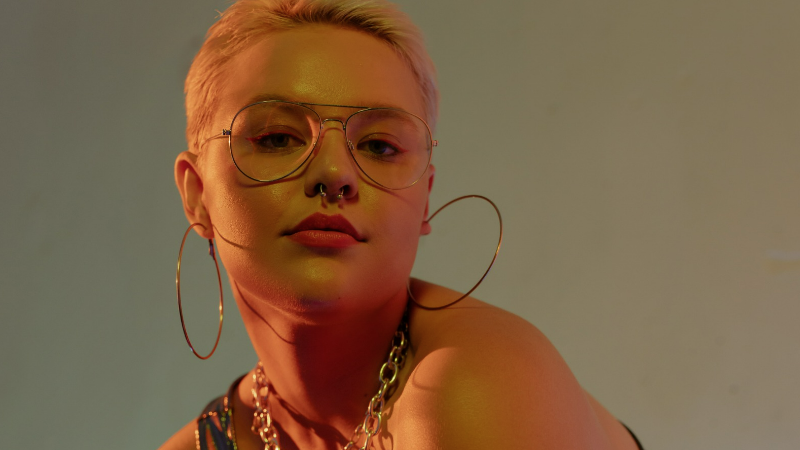
The Pushback Against Plus-Size Inclusivity: A Fashion Industry Dilemma
In recent months, the fashion industry has faced mounting criticism from body positivity advocates who are alarmed by a troubling trend—a shift back to ultra-thin models. Despite the significant strides made in prior years toward inclusivity, the representation of plus-size models is reportedly dwindling. This is particularly evident at high-profile events like London Fashion Week, where only 26 plus-size models were featured during the Autumn/Winter 2025 season, a stark contrast to the past when diversity was celebrated more prominently.

Paloma Elsesser, a celebrated plus-size model and winner of the British Fashion Council's Model of the Year award in 2020, has expressed disappointment regarding the current landscape, suggesting a regression in the industry's commitment to representation. Shauna, a prominent voice in the body positivity movement, highlights that ahead of the upcoming Australian Fashion Week, only four designers have produced clothing in size 20, a stark contrast to the variety once available.
"The trends do tell us that smaller bodies deserve to be celebrated and they deserve to be seen," Shauna explained. "But it just sends a message, conscious or subconscious, that I have a body that's not desirable."
This sentiment is echoed by fellow curve model Annika Neilsen, who reflects on her experiences at major fashion events where plus-size representation was minimal. With the rise of social media, particularly platforms like TikTok, the dynamics of fashion and trends are evolving. The influence of these platforms often sidelines body diversity, prioritizing aesthetic appeal over inclusivity.
The Resurgence of Ultra-Thin Aesthetics
Hillary Taymour, founder of the designer label Collina Strada, attributes the resurgence of ultra-thin models to societal pressures and the glamorization of certain body types. The prevalence of AI filters that distort perceptions of beauty further complicates the issue. Taymour warns of the harmful effects when people internalize narrow definitions of attractiveness.
"When people start to internalize it and devalue their own existence based on what they see, it's so harmful," she cautions.
The psychological implications of these trends are profound, echoing the sentiments of consumers who feel pressured to conform to idealized body standards.
The Role of Social Media in Fashion Trends
Recent research indicates that nearly 87% of women travelers prefer eco-friendly brands, suggesting a significant shift towards sustainability in fashion choices. Yet, this does not absolve the fashion industry of its responsibility to cater to diverse body types. The pressure to conform to trends set by influencers and viral content can create an environment where only a specific, often unattainable, body type is celebrated.
As Shauna noted, "While I understand fashion has been very aspirational historically, we're at a point in history where it shouldn't be exclusive." This sentiment resonates with many advocates who argue for a more inclusive approach to model representation and fashion marketing.
Advocating for True Representation
Despite the setbacks, advocates for body positivity continue to push for change. They argue that true representation must be prioritized within the fashion industry, ensuring that all bodies are celebrated and that fashion reflects the diversity of its consumers. The pushback against plus-size inclusivity is not just a trend; it’s a critical conversation about body image, self-worth, and the future of fashion.
Rebecca Shaw, a Sydney-based writer, describes the current situation as "not just disappointing," but rather a "really bad sign." The notion that only smaller bodies deserve to be highlighted in fashion campaigns sends a detrimental message to consumers of all shapes and sizes.
Looking Ahead: The Future of Fashion Inclusivity
The fashion industry's evolution continues to unfold, with inclusivity at its core remaining crucial. A significant portion of consumers is increasingly aware of the need for diverse representation, making it clear that brands cannot afford to ignore the call for change.
As social media continues to shape fashion trends and consumer preferences, the dialogue surrounding body positivity and inclusivity will likely gain momentum. Advocates argue that the fashion industry must adapt, introducing garments that cater to a wider range of body types and promoting models who authentically represent the diversity of consumers.
The push for inclusivity is not merely about fashion; it is about empowering individuals and fostering a culture where all bodies are acknowledged and celebrated. As the industry faces this critical moment, the ongoing advocacy for plus-size representation serves as a reminder of the work that still needs to be done.
Key Takeaways
- The representation of plus-size models has dramatically declined in major fashion events, raising concerns among advocates.
- The resurgence of ultra-thin trends highlights a regression in the fashion industry's commitment to inclusivity.
- Social media's role in shaping trends often sidelines body diversity, creating pressure to conform to unrealistic standards.
- Advocates continue to strive for true representation, emphasizing that all bodies deserve celebration within the fashion industry.
- The dialogue surrounding inclusivity is vital for the future of fashion, requiring action from brands and stakeholders alike.
The fashion industry stands at a crossroads. The pushback against plus-size inclusivity necessitates a deep understanding of the implications of representation in fashion. Advocates are vocalizing their concerns, urging brands to prioritize body diversity and ensure all consumers feel valued and represented. The journey toward true inclusivity is ongoing, but with continued advocacy, the future of fashion may become a more inclusive and empowering space for all individuals, regardless of size.